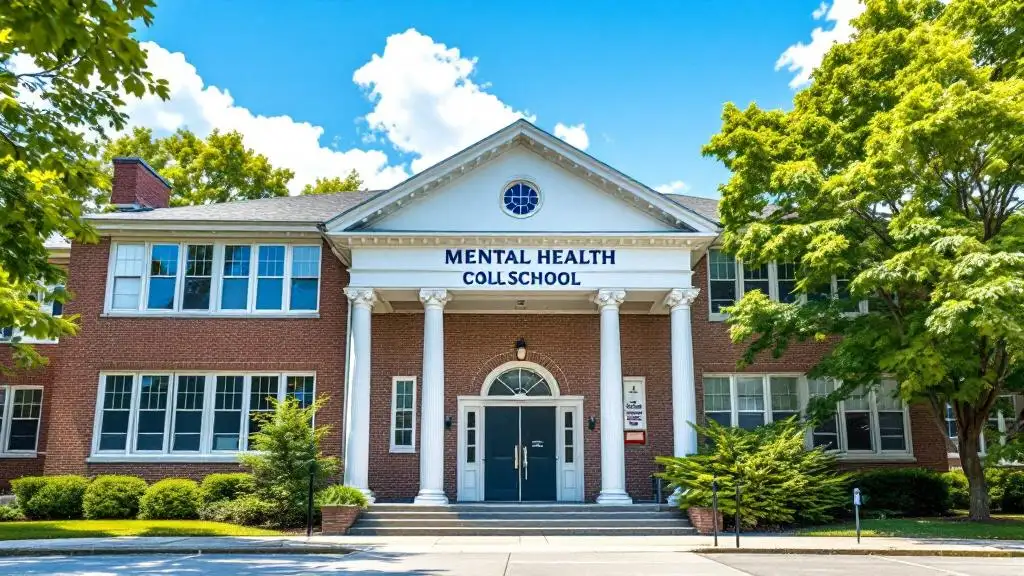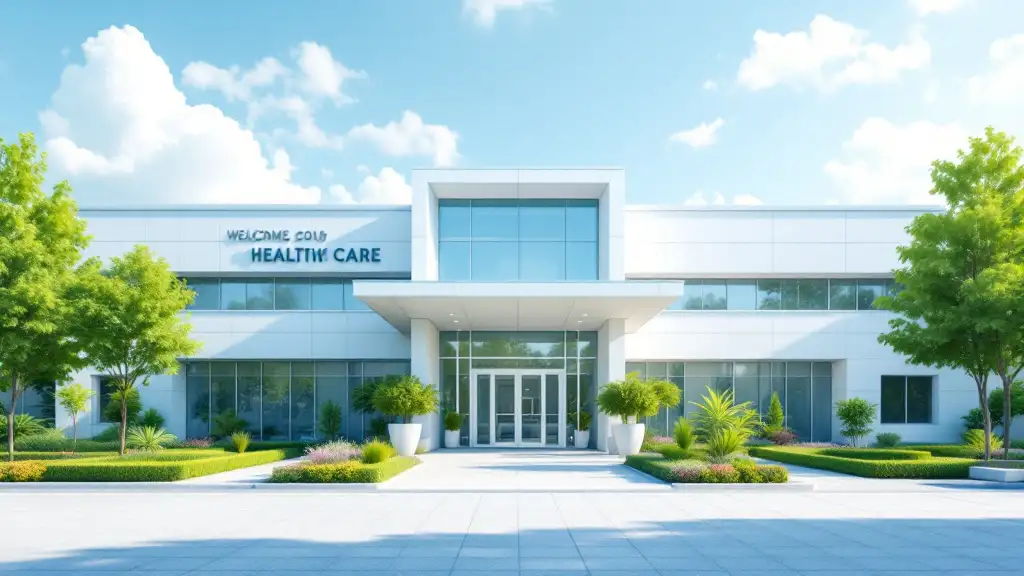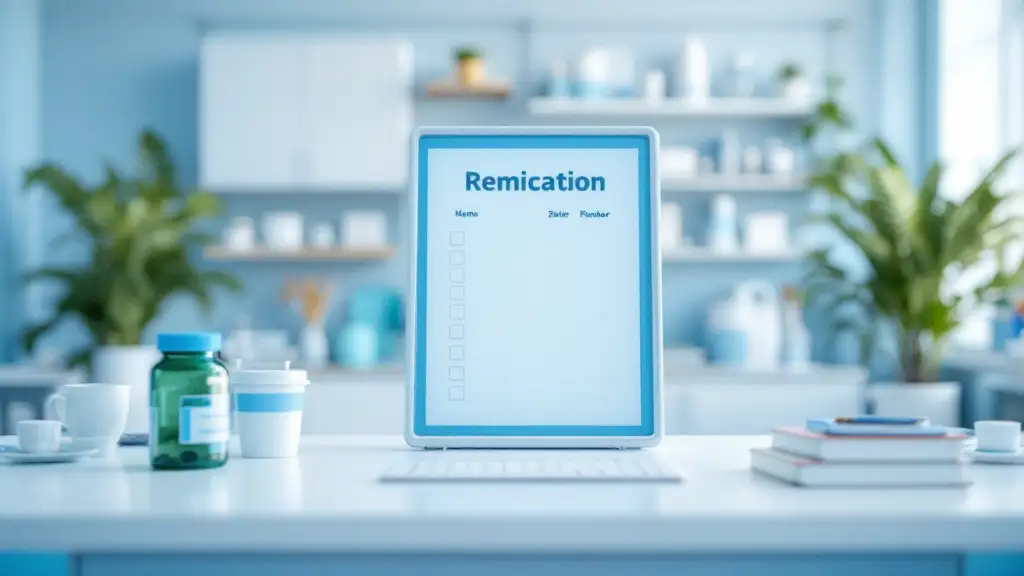Understanding the Distinct Landscape of Mental Health Services for Different Age Groups
Mental health services vary significantly across the lifespan, reflecting the unique needs, perceptions, and challenges faced by youth and seniors. Exploring these differences reveals insights into how tailored approaches and systemic structures aim to provide effective care, promote well-being, and foster cross-generational understanding. This article examines the contrasting features of mental health services, focusing on the specific needs of each age group, the barriers they encounter, and the importance of bridging gaps through conversations and integrated care models.
Differences in Service Focus and Delivery between Youth and Seniors
What are the differences between mental health services for youth and seniors?
Mental health services for young people, especially adolescents and young adults, are primarily designed to foster early intervention, family involvement, and address developmental concerns. These services are often delivered in accessible community settings such as schools, youth clinics, and specialized centers that cater to the unique needs of this age group.
Adolescents face high prevalence rates of mental health conditions, with nearly half experiencing some form of emotional or behavioral disorder. Despite this, many encounter barriers like social stigma, lack of awareness, and limited access to tailored care. Services targeted at youths often include psychoeducation, behavioral management training, and family-based support, aiming to prevent escalation and promote resilience.
In contrast, services for seniors focus more on managing age-related mental health challenges such as dementia, mobility issues, chronic illness, and social isolation. These are typically addressed within primary care settings or through community support programs. Older adults tend to receive care that emphasizes medication management, social support, and addressing physical health, with less emphasis on psychotherapy compared to youth services.
Access to specialized psychiatric care for seniors is often more limited, compounded by fewer age-specific programs and variants of mental health support tailored to aging populations. Higher suicide rates among older adults, especially those aged 75 and above, underline the urgent need for appropriate mental health interventions in this group.
Early intervention and family involvement in youth services
One of the distinguishing features of youth mental health services is early identification and intervention. Recognizing symptoms early can significantly influence outcomes, and family involvement is central to this approach. Family psychoeducation and training empower caregivers to manage complex behaviors, recognize warning signs, and support treatment adherence.
Programs like NAMI (National Alliance on Mental Illness) Basics are tailored for parents, focusing on managing specific behavioral challenges and emotional distress in children and adolescents. These strategies aim not only at immediate symptom relief but also at building resilience and reducing long-term mental health burden.
Age-related health challenges addressed in senior services
In older adults, mental health services aim to address health challenges linked with aging. Conditions like depression often coexist with physical illnesses, and addressing these requires integrated care. Services may include medication, psychotherapy, social engagement programs, and support groups that tackle loneliness and social isolation.
Because physical health issues often take precedence, mental health problems can be underdiagnosed or undertreated in seniors. Therefore, specialist interventions are essential for those with severe conditions such as late-onset depression, dementia-related agitation, or psychosis.
Delivery settings, such as schools and community clinics versus primary care
Youth mental health services predominantly operate within schools, community centers, and dedicated youth clinics, promoting accessible care and early engagement. School-based programs deliver screening, counseling, and psychoeducation directly where young people spend much of their time.
Seniors frequently access mental health services within primary care settings, where general practitioners act as gatekeepers and coordinate referrals for specialized interventions. Community outreach programs, senior centers, and home visits also play vital roles in reaching this age group.
Comparing Service Types and Approaches
| Aspect | Youth Services | Senior Services |
|---|---|---|
| Focus | Prevention, early intervention, family involvement | Management of age-related health issues, physical-mental health linkages |
| Delivery Settings | Schools, community clinics, specialized youth centers | Primary care, community programs, home visits |
| Common Interventions | Psychoeducation, behavioral training, family therapy | Medication management, social support, physical health integration |
| Barriers | Stigma, access, treatment engagement | Underdiagnosis, physical health prioritization, limited specialized programs |
| Provider Training | Child and adolescent mental health specialists | Geriatric psychiatry and primary care providers |
Overall Approaches Reflect Different Goals
The design of mental health services for youths prioritizes prevention, early detection, and family-centered support to alter developmental trajectories positively. For older adults, the emphasis shifts toward managing chronic, complex conditions, fostering social integration, and addressing physical health's mental health implications.
Understanding these differences helps policymakers, clinicians, and families advocate for age-appropriate, accessible, and effective mental health care. Tailoring interventions to each age group's distinct needs ensures better outcomes and supports overall well-being across the lifespan.
Developmental and Lifespan Variations in Needs and Treatment Approaches
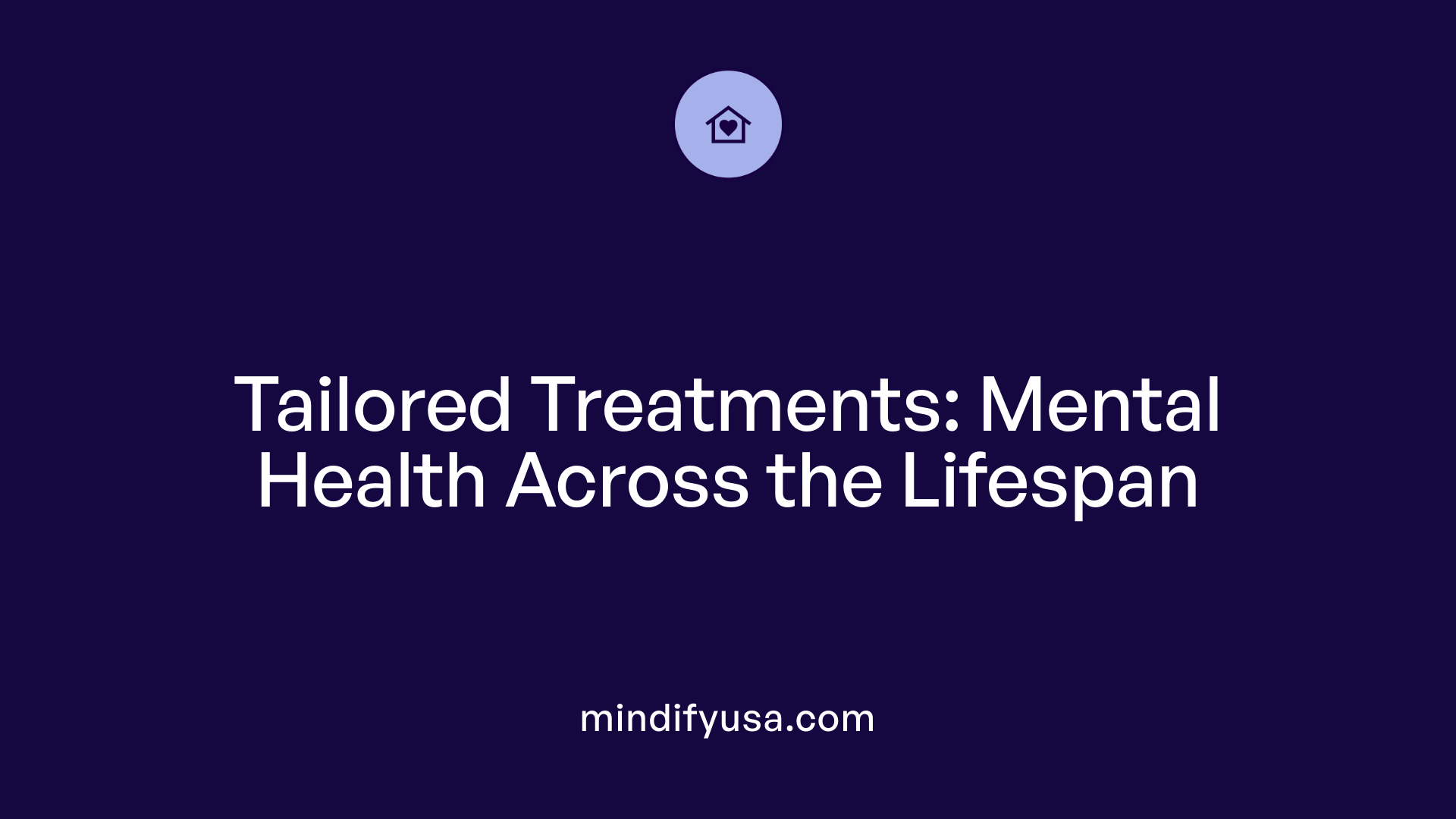
How do mental health needs and treatment approaches differ between childhood, adolescence, and old age?
Mental health needs evolve considerably from childhood through old age, shaping distinct treatment strategies for each stage of life.
Children and Adolescents: At this stage, mental health interventions focus heavily on developmental support, behavioral modification, and family involvement. Conditions such as anxiety, depression, ADHD, and conduct disorders often require tailored behavioral therapies and cognitive-behavioral therapy (CBT). These therapies are designed to be developmentally appropriate, often incorporating play, family participation, and educational components. While therapeutic effectiveness might be somewhat smaller compared to adults due to cognitive and emotional development stages, early intervention can significantly impact future mental health.
Young Adults: Treatment approaches become more sophisticated as individuals mature. Therapies such as interpersonal psychotherapy and family therapy are more typically employed, aimed at addressing complex issues like depression, anxiety, and relational difficulties. The effectiveness of interventions increases with age, partly because individuals can engage more actively in their treatment. Depression and anxiety in this group often lead to significant impairment in daily functioning, including educational attainment and employment.
Older Adults: As people age, mental health concerns often expand to include neurocognitive disorders, depression, and social isolation. Treatment approaches here tend to be more integrated, combining pharmacotherapy—such as antidepressants—with psychotherapy, including CBT tailored for the elderly. Addressing physical health comorbidities is essential, as conditions like chronic illness and mobility limitations can exacerbate mental health issues. Social support systems and community engagement become crucial components of care.
Summary of Lifespan Approaches:
| Age Group | Common Conditions | Typical Treatments | Specific Needs |
|---|---|---|---|
| Children & Adolescents | Anxiety, Depression, Conduct Disorders | Developmental support, behavioral therapies, family involvement | Cognitive development, family dynamics, school support |
| Young Adults | Depression, Anxiety, Relational issues | CBT, interpersonal therapy, family therapy | Independence, identity formation, social relationships |
| Older Adults | Neurocognitive disorders, depression, social isolation | Pharmacotherapy, age-appropriate CBT, social support | Managing comorbidities, mobility, social engagement |
While the core therapies like CBT are effective across ages, their implementation must be adapted to each developmental stage and the unique social and physical challenges faced by each age group.
In summary, mental health treatment is most effective when developmentally tailored, considering the biological, psychological, and social needs that characterize each life stage, ensuring supports not only address symptoms but also promote overall well-being and resilience.
Transitions from Childhood to Adulthood in Mental Health Care
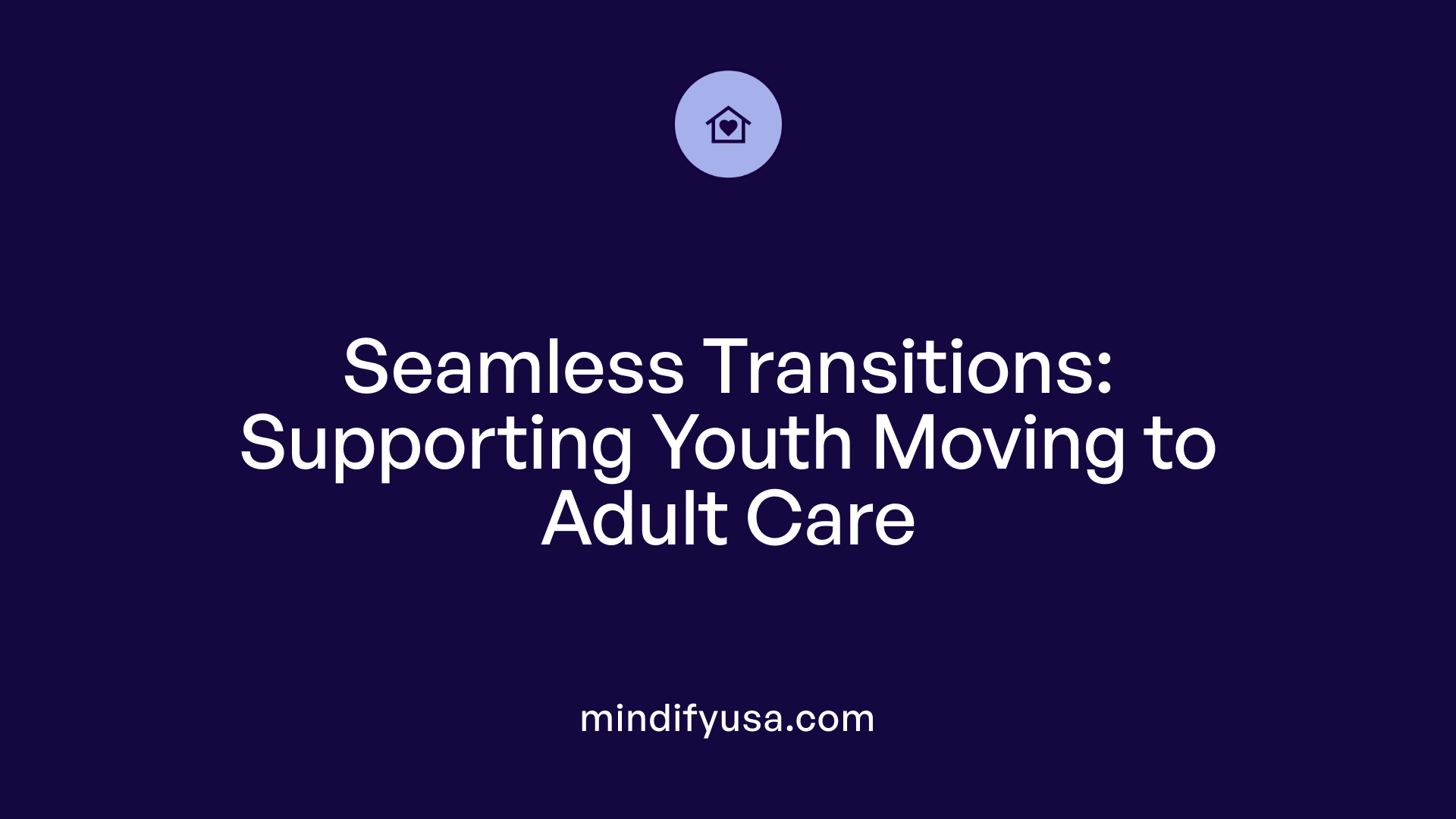
How do mental health services transition from childhood to adulthood?
Transitioning mental health services from childhood to adulthood requires a structured and well-coordinated approach. It’s a vital phase where continuity of care must be maintained to support young people's developmental and health needs.
A successful transition begins with early preparation, involving assessments and discussions that prepare the young person and their family for upcoming changes. This process encompasses individualized planning, where treatment goals and support systems are tailored to the evolving needs as the individual matures.
A central component of this transition is the periodic reassessment of diagnoses. Mental health conditions in adolescents and young adults can fluctuate—some disorders remain stable, others may develop, improve, or transform. Regular evaluations help clinicians understand the current state of a young person’s mental health, guiding appropriate treatment adjustments.
Effective communication between pediatric and adult mental health providers is essential. This ensures that transition is seamless, with clear sharing of patient history, current treatments, and future care plans. It also involves fostering the young person's independence and decision-making skills, empowering them to manage their mental health proactively.
However, the pathway is often complicated by various challenges. Systemic barriers, such as limited specialized youth mental health services and rigid age boundaries, can lead to gaps or delays in care. Additionally, many young people disengage from services during this period, often due to stigma, lack of suitable programs, or unfamiliarity with adult mental health systems.
To address these issues, many regions are developing youth-friendly services and tailored transition programs. Policy initiatives aim to create more flexible age boundaries and improve resource allocation, helping bridge the gap between child and adult services.
Overall, successful transition is a collaborative effort involving clinicians, families, and system administrators. It seeks to minimize disruptions, reduce the risk of mental health deterioration, and support young adults through a critical developmental stage.
Understanding and improving these transition processes are essential. They not only ensure ongoing mental health support but also promote resilience and autonomy in young people as they navigate adult life.
For further exploration, research into how mental health systems adapt to support youth transitioning to adult care offers valuable insights, including innovative models like clinical liaison roles and youth-focused centers.
| Aspect | Description | Challenges & Solutions |
|---|---|---|
| Process | Coordinated, individualized transition planning | Overcoming systemic barriers, creating flexible policies |
| Assessment | Regular reevaluation of mental health status | Managing fluctuating diagnoses, trauma history |
| Communication | Seamless info sharing among providers | Ensuring confidentiality, building trust |
| Barriers | Fragmentation, disengagement | Developing youth-friendly services, policy reforms |
| Goal | Support autonomy, continuity of care | Policy support, family involvement |
Effective transition models are vital for fostering resilience and continuity, ultimately improving long-term outcomes for young people with mental health needs.
Barriers to Mental Health Care: Age-related Perceptions and Systemic Challenges
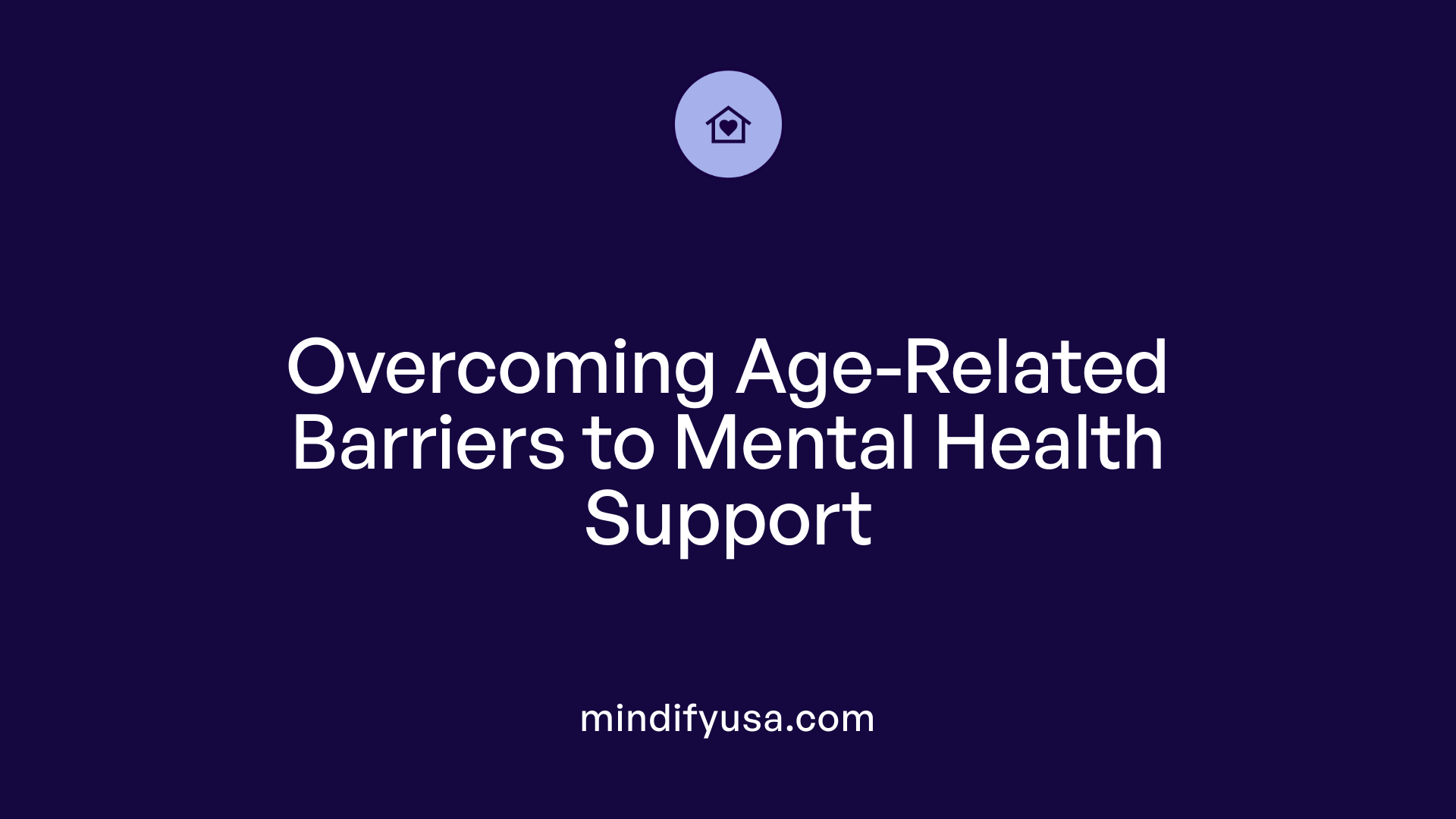
What are the common barriers to mental health care related to age, and how do perceptions differ for youth and seniors?
Barriers to accessing mental health services differ significantly across age groups, shaped by societal attitudes, misconceptions, and systemic issues. Among youth, stigma remains a primary obstacle. Many adolescents and young adults experience embarrassment or fear of peer judgment when seeking help. This stigma is often compounded by poor mental health literacy, with some young people overestimating or misunderstanding the severity of their conditions. Additionally, a cultural tendency toward self-reliance discourages young individuals from reaching out for support, fearing that admitting to mental health struggles may be perceived as weakness.
In contrast, older adults face different but equally complex barriers. Ageism and societal stereotypes often depict mental health as a concern only for the young or as a sign of weakness in seniors. Many seniors believe that feelings of depression or anxiety are just a normal part of aging, which discourages them from seeking help. Misconceptions about mental health's relevance at older ages can lead to underdiagnosis and undertreatment.
Systemic barriers are pervasive across all age groups but tend to impact certain populations more heavily. Shortages of mental health providers, especially those trained to work with specific age brackets, create access issues. Geographic disparities mean rural and underserved communities have fewer available services. Insurance coverage limitations and high costs further restrict access, especially for those without adequate health benefits.
Perception of mental health severity also varies. Youth may downplay their symptoms or fear the social repercussions of a diagnosis, perceiving their issues as less serious or temporary. Conversely, some seniors might underestimate their mental health needs, viewing symptoms as inevitable aspects of aging rather than treatable conditions.
Effectively addressing these barriers calls for tailored strategies. Increasing mental health literacy through education campaigns can demystify mental illness for all ages. Anti-stigma initiatives should focus on shifting societal views, emphasizing that mental health is integral to overall well-being at every life stage. Expanding access via telehealth and community-based programs can bridge gaps, especially in remote areas. Improving systemic coordination—such as smoother transitions from youth to adult mental health services—can ensure that patients receive continuous, age-appropriate care.
In summary, overcoming age-related barriers to mental health care requires a multifaceted approach. Raising awareness, reducing cultural stigma, expanding access, and reforming systemic structures are all essential steps to ensure that individuals across the lifespan can seek and receive the support they need.
Service Structure, Eligibility, and Outcomes across Age Groups

How are mental health services structured for different age groups, and what are the typical eligibility criteria and expected outcomes?
Mental health services are designed to meet the distinct needs of children, adolescents, adults, and older adults through a variety of specialized programs and care models. These services often involve multidisciplinary teams that combine medical, psychological, social, and educational support to foster holistic care.
For children and adolescents, services are predominantly organized within Child and Adolescent Mental Health Services (CAMHS). These services can be categorized into universal, targeted, and specialist care. Universal services include school-based programs and primary care, targeted interventions address early signs of mental health issues, and specialist services cater to complex disorders such as depression, anxiety, autism spectrum disorders, and conduct problems. Eligibility typically depends on age (up to 18 years), severity of symptoms, and specific diagnoses.
Adults usually access mental health services through community-based outpatient clinics, crisis units, or primary care providers. For severe mental illnesses, secondary care services—often called Adult Mental Health Services (AMHS)—are available. These focus on conditions like schizophrenia, bipolar disorder, and severe depression. Eligibility in adult services often hinges on the severity and impact of symptoms, with some services requiring specific clinical diagnoses or functional impairments.
Older adults' mental health care emphasizes both psychiatric and social needs, often integrated with general healthcare. Geriatric mental health services address issues like depression, dementia-related disorders, and anxiety, with eligibility based on age (typically 65+), clinical presentation, and functional status.
The overarching goals of these services include symptom management, improving functioning, and enhancing quality of life. Treatment outcomes are monitored through various standardized tools, such as the Health of the Nation Outcome Scales (HoNOS), which assess symptom severity, social functioning, and risk behaviors. Additionally, quality improvement protocols focus on service satisfaction, reduction in hospitalizations, and the attainment of personal recovery goals.
Monitoring outcomes like symptom reduction and quality of life
Throughout the treatment process, mental health providers evaluate progress regularly. In children and adolescents, improvements in school attendance, social engagement, and family functioning are critical indicators. For adults, reductions in symptom severity, relapse rates, and hospital readmissions are tracked diligently. For older adults, assessments include cognitive functioning and daily living activities.
Overall, there is an emphasis on evidence-based practices, person-centered care, and continuity of services to achieve optimal outcomes. Coordination among sectors—health, education, social services—is crucial to ensure seamless care transitions, especially during critical periods such as moving from CAMHS to adult mental health services.
| Aspect | Children & Adolescents | Adults | Older Adults |
|---|---|---|---|
| Service Types | Universal, targeted, specialist services | Outpatient clinics, crisis units, primary care, specialized secondary care | Geriatric clinics, integrated primary and mental health services |
| Typical Eligibility | Age <19, severity, diagnosis, support needs | Severity of symptoms, clinical diagnosis, functional impairment | Age 65+, clinical symptoms, functional impact |
| Focus of Interventions | Prevention, early intervention, family involvement, developmental support | Symptom reduction, relapse prevention, social and occupational functioning | Cognitive health, mood stabilization, daily functioning |
| Treatment Goals | Improvement in developmental milestones, family support, reducing escalating behaviors | Symptom management, recovery, maintaining independence | Enhance quality of life, manage comorbidities |
| Outcome Measurement | School performance, family feedback, standardized scales like HoNOS | Symptom scales, hospitalization rates, functional assessments | Cognitive tests, daily activity assessments |
This structured approach aims to provide age-appropriate, effective, and accessible care, ensuring that individuals across the lifespan can achieve better mental health outcomes and an improved quality of life.
The Role of Cross-generational Dialogue in Mental Health Awareness
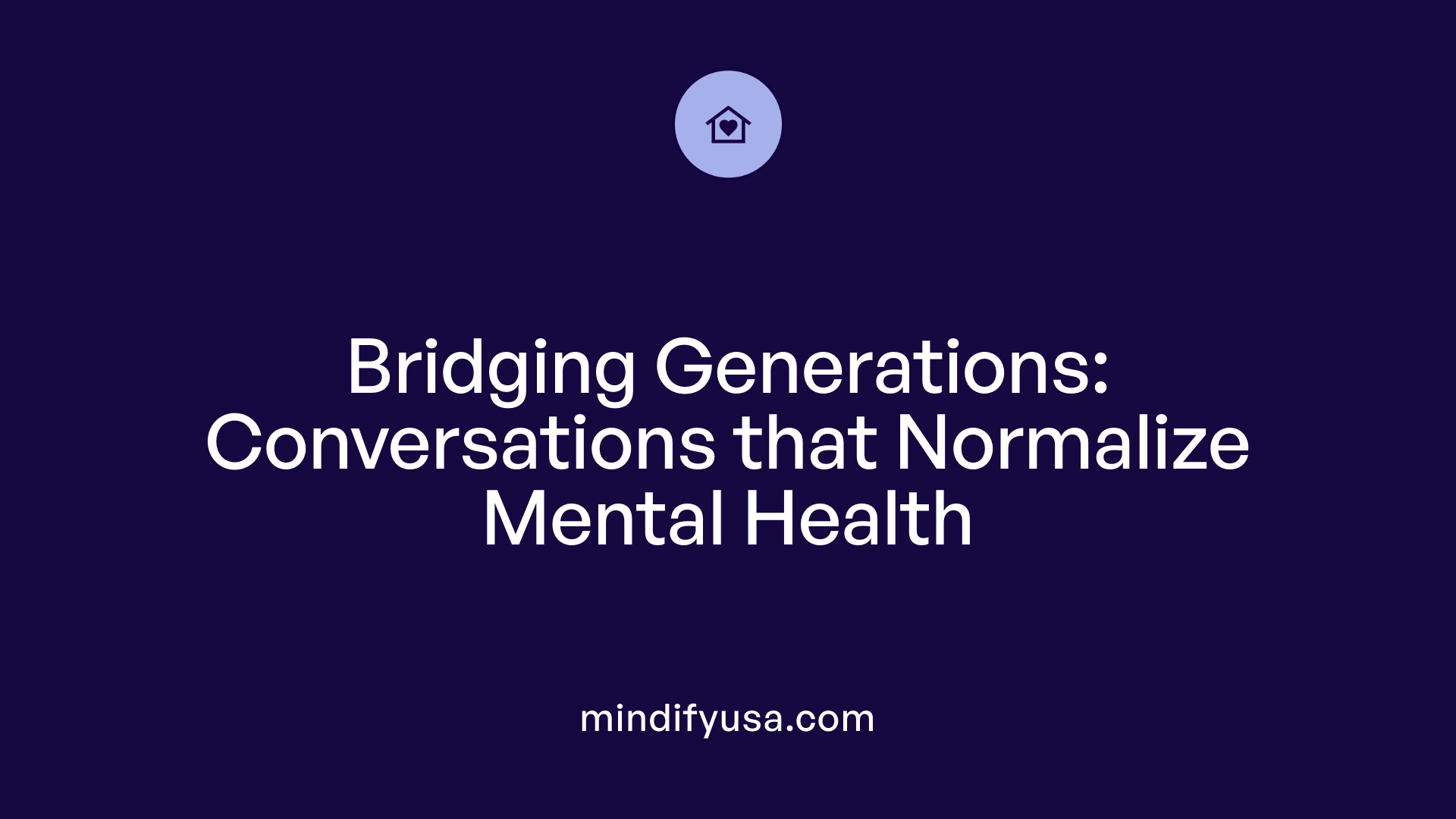
Why are cross-generational conversations about mental health important, and how can they bridge gaps in understanding?
Cross-generational talks about mental health are essential because they foster a deeper mutual understanding between different age groups. These dialogues help break down stereotypes, reduce stigma, and promote empathy, which are crucial for creating supportive communities. Elders can share their personal experiences and the wisdom gained from living through various societal changes, while younger generations bring fresh insights, often related to new challenges and technological advances.
Such conversations serve as a bridge, connecting the past and present to build a more inclusive future. When families and communities communicate openly about mental health, they demystify complex issues, making it easier for everyone to seek help without fear or shame. This openness also strengthens bonds, encouraging shared resilience and emotional support.
Implementing strategies like creating safe spaces for discussion, providing education, and encouraging participation in community programs can enhance these intergenerational exchanges. Activities like storytelling sessions, joint workshops, or family therapy sessions foster environments conducive to understanding and empathy.
By actively promoting these dialogues, societies can work toward reducing the social and cultural barriers that often prevent individuals from discussing mental health openly. Ultimately, cross-generational conversations contribute to healthier, more connected communities where every individual feels recognized and supported.
Strategies to facilitate intergenerational conversations
| Strategy | Description | Benefits |
|---|---|---|
| Safe discussion spaces | Creating non-judgmental environments for open dialogue | Builds trust, reduces stigma, encourages sharing |
| Educational programs | Providing information about mental health tailored for all ages | Increases awareness, dispels myths |
| Family and community activities | Engaging in shared experiences like storytelling or group exercises | Strengthens bonds, promotes empathy, improves communication |
| Use of technology | Leveraging social media, video calls, and online forums | Connects distant family members, reaches tech-savvy youth |
| Professional support | Facilitating conversations with mental health professionals | Offers expert insights, ensures accurate information |
Bridging perceptions and understanding about mental health
Young people tend to be more open about mental health issues and generally recognize the importance of discussing their struggles. They often feel comfortable seeking help and expressing their feelings, especially through digital platforms.
Older adults, however, might view mental health through the lens of stigma or misunderstanding. Many regard mental health issues as health concerns of the past or personal weaknesses, which can hinder open communication.
Encouraging respectful dialogue helps to break down these barriers. When elders see their grandchildren or community members advocating for mental health awareness, it can inspire a more accepting attitude. Conversely, young people can benefit from learning about the resilience and coping strategies of older generations.
Family discussions, community-led workshops, and media campaigns featuring personal stories from both sides can facilitate this exchange, reducing stigma and fostering mutual understanding.
How open discussions can strengthen bonds and foster resilience
Talking openly about mental health nurtures empathy, understanding, and stronger familial bonds. It allows individuals to share their experiences, fears, and hopes, creating a support network rooted in compassion.
Families who communicate about mental health are better equipped to support each other during difficulties. These conversations can also empower individuals to seek help early, preventing the escalation of issues.
Encouraging shared activities like storytelling, cultural events, or joint therapy sessions helps develop a culture of openness. This strategy can lead to healthier, more resilient communities where mental health is prioritized and supported across all ages.
Supporting intergenerational conversations through community programs
Organizations like mental health centers, community groups, and health services play a crucial role in promoting these dialogues. Programs such as intergenerational storytelling, youth-adult panels, and family education workshops can serve as effective platforms.
Moreover, leveraging cultural sensitivity, using technology, and involving trusted community leaders can enhance participation. These efforts help normalize discussions around mental health, making it an integral part of community well-being.
By encouraging these meaningful exchanges, society can move toward destigmatizing mental health issues, improving access to support, and building life-long resilience among individuals and families.
| Aspect | Details | Impact |
|---|---|---|
| Mutual understanding | Sharing experiences and perspectives | Reduces prejudice, builds empathy |
| Stigma reduction | Open discussions demystify mental health issues | Promotes help-seeking behaviors |
| Family strengthening | Cultivating empathy and support within families | Enhances emotional bonds, resilience |
| Community engagement | Programs and activities for diverse age groups | Creates inclusive environments |
| Use of technology | Virtual platforms facilitate wide-reaching conversations | Connects distant relatives, younger and older generations |
Fostering cross-generational conversations about mental health transitions societal perspectives from stigma and misunderstanding to compassion and understanding. These dialogues are vital in building resilient, inclusive communities that prioritize mental well-being for all ages.
Fostering an Inclusive and Lifecycle-Spanning Approach to Mental Health Care
Understanding the distinct structures, needs, barriers, and perceptions associated with mental health services for youth and seniors highlights the necessity for tailored, accessible, and interconnected care models. Bridging gaps through open dialogues and systemic reforms not only enhances treatment effectiveness but also promotes societal resilience and inclusivity. As mental health awareness expands across generations, fostering understanding and cooperation becomes essential to ensuring that services meet the evolving needs of all age groups, supporting a healthier, more empathetic society.
References
- Youth vs. Adult Mental Health
- Age differences in mental health disorder recognition
- Young adults are less likely than older adults to use mental ...
- Attitudes towards mental health care in younger and older ...
- Differences Between Parents of Young Versus Adult ...
- Do older and younger people differ in their reported well- ...
- The divide between child and adult mental health services












